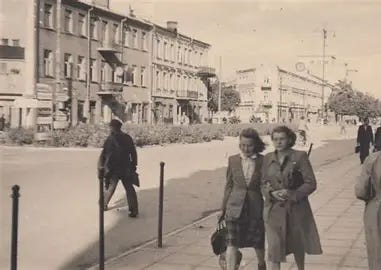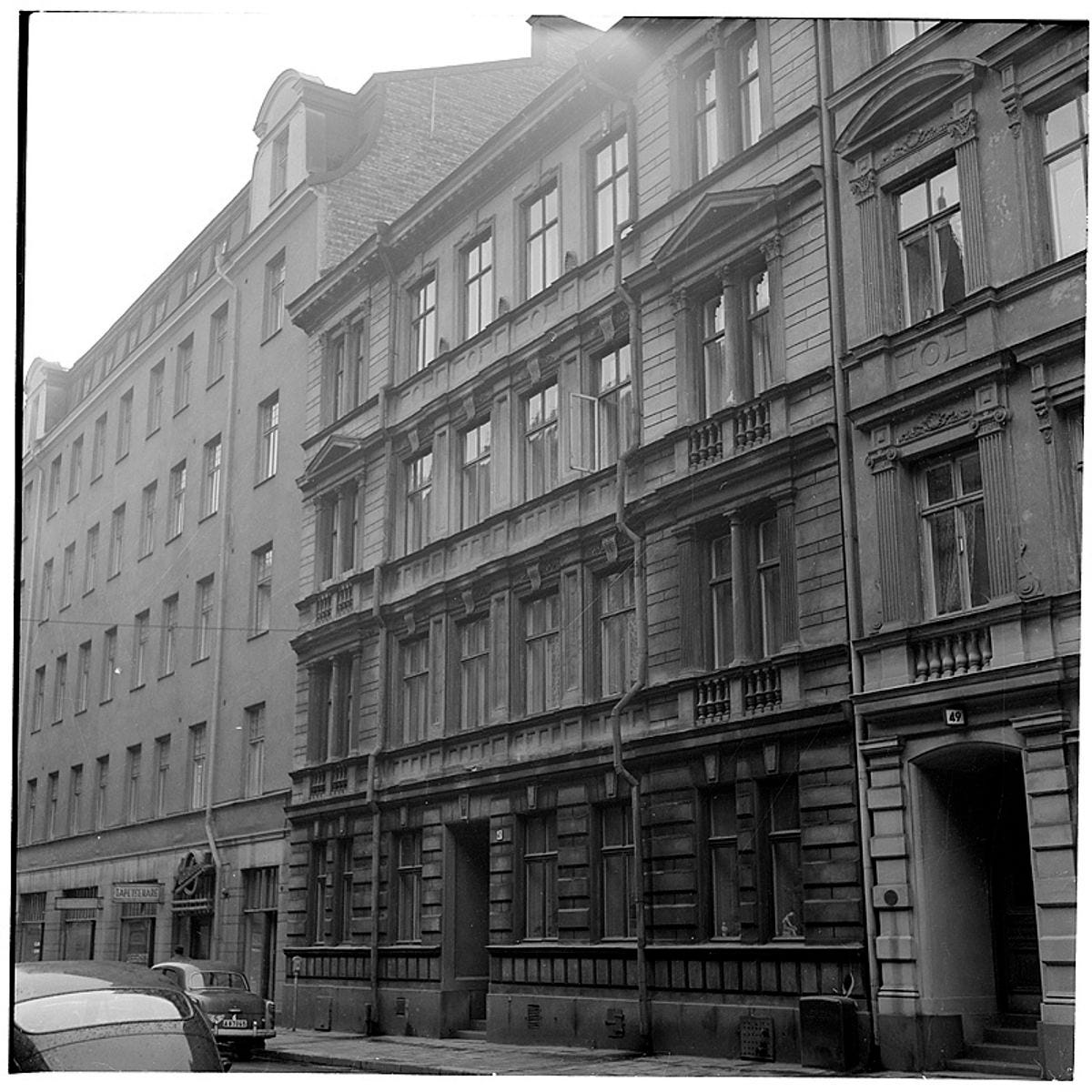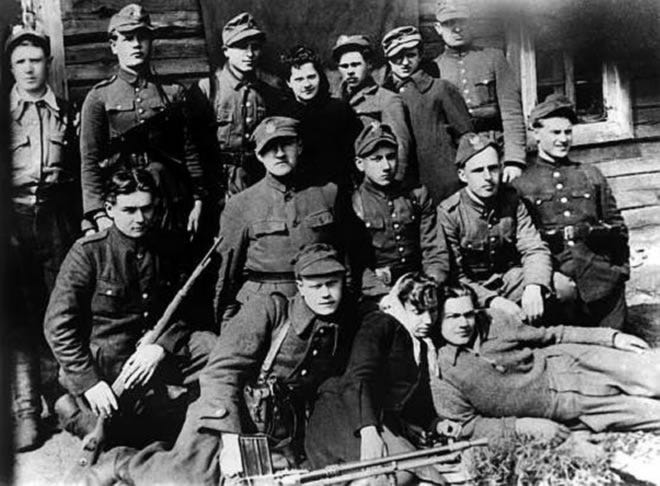Part 2: 11 Lithuanian KGB Counterintel Ops Against the West in 1955
Clandestine operations of KGB agents dispatched to the West revealed in the archives.
3. Operation CONTACT
The description of this operation began with a claim that during the German occupation of Lithuania, the well-known anti-Soviet and anti-communist organization, the National Alliance of Russian Solidarists (NTS), had been active in the city of Kaunas.1 According to the report, the local leaders of the NTS named Perekrestov, Kosovsky, and Vorobey fled the city together with the retreating Germans and were now taking part in the NTS activities in West Germany. Vorobey stayed in contact with a woman from Kaunas who had owned one of the NTS safehouses. They might have been friends, perhaps even lovers. In the meantime, however, the woman was recruited by the KGB and received a codename KIRA.

KIRA corresponded with Vorobey via her sister who lived in the Netherlands. The KGB plan consisted of using KIRA’s contact with Vorobey to dangle another, more competent agent codenamed VASILYEV to him and the NTS leadership in West Germany. Vasilyev worked for the Soviet government agency in charge of facilitating the import of foreign-built ships and could therefore legally travel to the West.
Lithuanian KGB reported to Fedotov in Moscow that, in September 1955, they organized a meeting between their agents KIRA and VASILYEV without, however, revealing their agent status to one another. This was done in order to make their interactions appear more “natural” and spontaneous, both to themselves and to the outsiders. From then on, KIRA was told to send her letters to her sister via VASILYEV and KGB began to work on arranging a meeting between VASILYEV and KIRA’s sister in the Netherlands.
KGB’s expectation was that the appearance of VASILYEV in the Netherlands and his meeting with KIRA’s sister would generate an interest in him by the NTS leadership, leading to him, over time, being able to penetrate their organization.
4. Operation THREAD
This was another operation that involved dangling a KGB agent to an anti-Soviet Lithuanian émigré organization in a Western country.
In 1951, Lithuanian KGB instructed its agent ZHEMAITIS to initiate correspondence with his close friend named Lingis, former press officer of the Lithuanian Embassy in Sweden. Since the end of World War Two, Lingis had become one of the leading figures in the Lithuanian émigré community in Sweden.

Starting in 1954, under the supervision of the KGB, ZHEMAITIS began to send and receive letters from Lingis using foreign sailors visiting the port of the Lithuanian city of Klaipeda as couriers. In these letters, Lingis encouraged his friend to flee the Soviet Union, promising to organize the escape.
Lithuanian KGB informed Fedotov that it intended to instruct ZHEMAITIS to convince Lingis to assist in the escape of another person, a much younger KGB agent, (ZHEMAITIS was 59 years old) tasked to infiltrate the Lithuanian émigré circles in Sweden.
5. Operation BZHOZA [BRZOZA - “Birch Tree” in Polish]
Just like Operation SCANDINAVIA described in Part 1, this operation also aimed at dangling a KGB agent to British intelligence. The only difference was that while SCANDINAVIA had Sweden as its place of action, BRZOZA focused on Poland. That was why the operation’s name was a Polish word.
Lithuanian KGB stated that, in 1955, it trained and dispatched an agent codenamed STOPA to Poland to offer his services to British intelligence. However, STOPA was unsuccessful in doing so because another agent codenamed GUMKA, who was supposed to introduce STOPA to the suspected British intelligence officer, failed to do so.
Evidently undaunted by this failure, Lithuanian KGB devised another plan for STOPA. This plan appeared to be more elaborate than the initial plan. It referred to the fact that, in 1947, two former officers of the anti-Soviet Polish Home Army (Armia Krajowa - AK) named Gzhegota and Kzyms escaped from the Soviet labor camp and created an underground Polish organization in Lithuania which they called the “Dispositional Center.” They were soon arrested and brought back to the camp to serve out their sentence. In 1949, however, they were freed and sent to Poland. Lithuanian KGB was successful in recruiting one member of their organization codenamed KIARSHTAS who remained in Lithuania.

Lithuanian KGB intended to use KIARSHTAS to simulate the re-constitution of the “Dispositional Center” in Lithuania by some of its former members. The “Dispositional Center” would then send STOPA abroad as their representative and liaison with the Polish émigré organizations and ultimately with British intelligence.
6. Agent YUNSKAYA
This operation was not assigned its own name and was referred to by the name of its main protagonist. Once again, the main target was British intelligence but the place of action, in contrast to Operations SCANDINAVIA and BZHOZA, was Great Britain itself.
Lithuanian KGB agent codenamed YUNSKAYA was described as a descendent of a wealthy [Jewish] merchant family with numerous relatives and friends abroad, some of whom allegedly had ties to British intelligence officers based in Lithuania. According to the Lithuanian KGB, one of these intelligence officers was named Kamber [or Cambert].
YUNSKAYA was instructed by the Lithuanian KGB to establish and maintain correspondence with her relatives in Great Britain. In order to avoid the official postal channels and create the appearance of uncensored communication, KGB used another agent codenamed BORISOV as a courier for YUNSKAYA’s letters. BORISOV appears to have been a sailor or a maritime official who often visited foreign ports. For instance, he was able to deposit YUNSKAYA’s most recent letter in a mailbox in the Welsh coastal city of Swansea.
Lithuanian KGB intended to use the trip to Great Britain by YUNSKAYA’s two good friends to dangle YUNSKAYA and BORISOV to the anti-Soviet Jewish organizations and ultimately to British intelligence.
(Part 3 coming next week)
“Докладная записка об агентурно-оперативной работе 2 отдела КГБ при СМ Литовской ССР за 1955 г. [A Report on Agent-Operational Work of the 2nd Department of the KGB Attached to the Council of Ministers of the Lithuanian SSR for 1955],” Fond K-1, Op. 3, File 573, pp. 63-120. Lietuvos TSR Valstybės Saugumo Komitetas [Lithuanian KGB] Selected Records, Hoover Institution.

